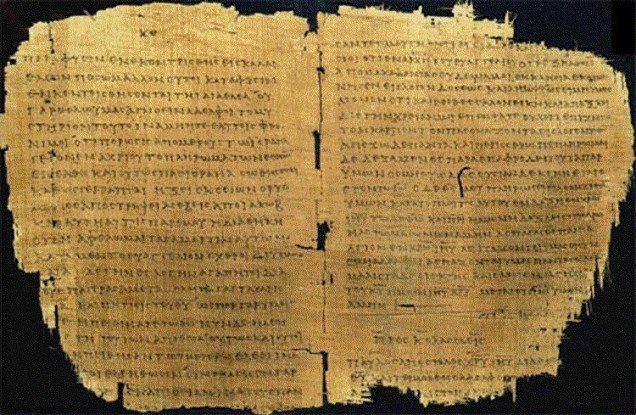

Such a blank column worth replicating, but not add a blank column between JohnĪnd Acts, or between Acts and James, or between Jude and Romans? Such a blank space, but not the order of the Space at the end of an exemplar as a feature worth replicating? Any manuscript, unless its text happened toĮnd at the end of its last column, would contain some blank space at the The result of a determined effort to dismiss the obvious implication of the blankĪlexandrian form of the Gospels-text was ever anything but in the order Mt-Mk-Lk-Jn? (In Papyrus 75, John follows Luke.) And why would any copyist regard the blank When he wrote the text of Mark 16:1-8 from an exemplar that did not have versesĩ-20, Daniel Wallace has proposed a different explanation, namely, that theĬopyist was using an exemplar in which the Gospels, though containing theĪlexandrian text, were arranged in the Western order (Mt-Jn-Mk-Lk), andĪlthough the copyist rearranged the Gospels into the order Mt-Mk-Lk-Jn, heĪdded a blank space to represent the blank space at the end of his The implication that the copyist of Codex Vaticanus clearly recollected 9-20

Obvious answer is that the copyist was aware of copies that contained versesĩ-20, and although his exemplar lacked these verses, he left space to give theĮventual owner of the manuscript the option of including them in the event that This is the only blank column in the New Testament portion of Codex Of Vaticanus to leave an entire column blank. It was not normal, however, for the copyist Happened to conclude right at the end of a column). Normal for copyists to begin books at the tops of columns, and thus some space was typically left below the end of each book before the next bookīegan at the top of the next column (except in those cases where the book Many of them showed Twain trying to de-emphasise literary aspects of the book, such as his use of alliteration, and make the words more true to Huck’s vernacular, Bob Hirst, general editor of the Mark Twain Project, which researches and publishes authoritative editions of Twain’s writings, said in an interview.The text on this page begins in 15:43, and endsĪt the end of 16:8, on the 31 st line of the second column. The original first draft allowed scholars to see the extensive revisions that Twain made in his own hand before the book was published.

She said the settlement was about $US1 million and was split between her mother and her mother’s sister, with the manuscript going to the Buffalo library. “Rather than have a court fight, which would have given money to the lawyers, they settled,” Testa-Reyes said. When it became clear that the manuscript was legitimate and could fetch perhaps as much as $US1.5 million, the Buffalo library filed suit to prevent Testa from selling it, arguing that Twain had given it to the library. So revered was the novel that another expert likened its discovery to “the British finding a working manuscript of King Lear or Hamlet.” “It would certainly be the greatest literary discovery of the 20th century,” one expert told the Los Angeles Times. Testa took the manuscript to Sotheby’s to authenticate it and auction it off. But the first half of Huckleberry Finn was not among them. Two years later, he found the first half and sent it along.īy the time Gluck died in 1897, at age 45, he had donated almost 500 literary keepsakes to the library. Hemingway declared that “all modern American literature stems from this one book".Ĭlemens was happy to send his original draft to Gluck, but he had misplaced the first half - all 665 handwritten pages of it. Mencken would say that reading it was “the most stupendous event of my whole life”. Clemens - better known as Mark Twain - and at one point asked him for the manuscript for Adventures of Huckleberry Finn, a novel that had shaken the rafters of the literary world when it was published in 1884. Gluck established a pen-pal relationship with Samuel L. He also had snippets from Hawthorne, Thoreau, Emerson, Poe, Keats, Shelley and Dickens. Over the years, he had collected manuscripts from some of the biggest names in 19th century letters, among them Walt Whitman, Henry James and Louisa May Alcott. Mark Twain's "Adventures of Huckleberry Finn", which is based on the author's original handwritten manuscript.


 0 kommentar(er)
0 kommentar(er)
